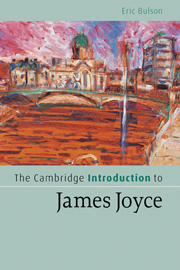Chapter 3 - Works
Published online by Cambridge University Press: 05 June 2012
Summary
Dubliners
Dubliners is the most widely read of Joyce's works. It is accessible, easy to read, and deceptively straightforward. Even if Joyce had never gone on to write A Portrait of the Artist as a Young Man, Ulysses, and Finnegans Wake, Dubliners would have earned him a place in literary history as a skilled prose technician. But since we know that Dubliners was just one step in a career that spanned more than three productive decades, it also needs to be seen as a starting point, a place where Joyce was in his workshop discovering his powers as a writer of fiction. Although he would go on to reinvent the form of the novel, he first had to figure out how to tell a story, put a plot together, develop characters, and craft a conversation.
Dublin was the setting for virtually all his works. As early as Dubliners he had big plans for his native city and the desire to make it the literary capital of the twentieth century:
I do not think that any writer has yet presented Dublin to the world. It has been a capital of Europe for thousands of years, it is supposed to be the second city of the British Empire and it is nearly three times as big as Venice. Moreover … the expression “Dubliner” seems to me to have some meaning and I doubt whether the same can be said for such words as “Londoner” and “Parisian” both of which have been used by writers as titles. (LII, 122)
- Type
- Chapter
- Information
- The Cambridge Introduction to James Joyce , pp. 32 - 106Publisher: Cambridge University PressPrint publication year: 2006



